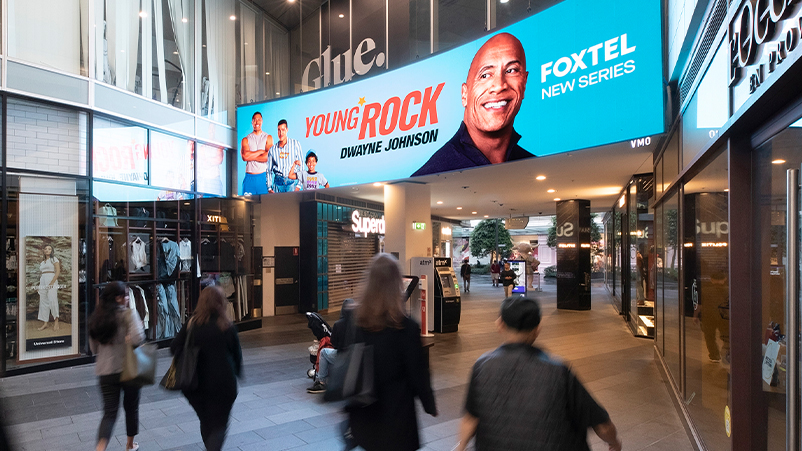Shop, don’t drop: how to avoid screen burn in retail OOH

Traditional outdoor thinking needs to evolve beyond basement-level rates, high-value bundles and exclusive centre coverage.
A two-year study into retail out of home shows that placement and screen quality is everything when it comes to driving results. Here’s how to double audience engagement.
What’s the most important factor for retail out-of-home buyers in delivering return on investment for brands?
Whilst effective screen rate, level of discount and CPM can look impressive on a spreadsheet, it is ultimately the quality of screens and their placement that delivers true campaign performance.
Traditional outdoor thinking needs to evolve beyond basement-level rates, high-value bundles and exclusive centre coverage. At face value, these metrics may appear a faster way to differentiate between OOH providers. But they ignore the single most important factor in retail OOH campaign performance – screen quality.
In outdoor, a screen’s ability to attract attention is dependent on the quality of the screen and positioning within centre. Unfortunately, the retail media industry has been driven by quantity not quality and as such placement within retail centres vary significantly across each location.
All screens in retail aren’t created equal and, by continuing to place the same value on screens that are vastly different in quality, the market risks a failure of due diligence. The visibility of a screen and its ability to captivate and hold attention are logical ways of judging the quality of screen formats.
To better understand qualitative screen metrics, VMO commissioned research to prove the true value of screen quality in retail environments. For the past two years VMO have researched engagement and attention statistics based on the various screen types and placements across live retail OOH environments.
The research was developed from a combination of 200 million data points – fused with VMO’s audience measurement system DART and Eye Tracking data from tech company Access HQ. The results help understand consumer attention metrics – and prove that the key to maximising ROI is with well-placed screens.
Across all screen formats, according to the two-year study, quality and placement drive increased attention in retail environments – proving quality counts.
The research discovered the main attributes that positively impact audience attention and viewability in retail OOH environments are as follows:
- Quality screens need to face the main foot traffic as they deliver twice the engagement of parallel screens.
- Beware of screens that are obstructed by instore amenities, ATM, rubbish bins, activations, etc.
- Select screens in high dwell environments as they can be viewed on approach for extended periods e.g. food courts, screens on escalator bulkheads, ceiling mounted.
- Use full motion digital creative to take advantage of the additional engagement these formats deliver.
Advertisers that adopt these research principles have confidence they’re buying the best quality screens, with placements that deliver optimum viewability and message cut-through. What we’re finding though is that most advertisers are unaware of the screens they’re buying and the differences in attention performance.
VMO is encouraging media agencies to plan retail OOH campaigns with premium inventory and to consider quality attributes to maximise the effectiveness of format selection: By choosing only formats and locations that deliver the best audience attention for your client’s brands, can you maximise the full potential for ROI.
And to help busy retail OOH buyers take the guess work out of quality metrics, VMO has developed practical applications for agencies to streamline the process in evaluating and briefing only quality retail screens.
Now in market across leading agency groups this research gives planners, buyers and clients a truer picture of retail out of home.
Because when it comes to retail OOH, better research leads to stronger results.
